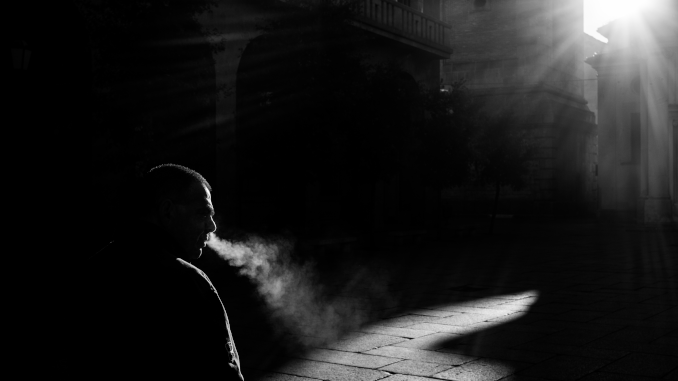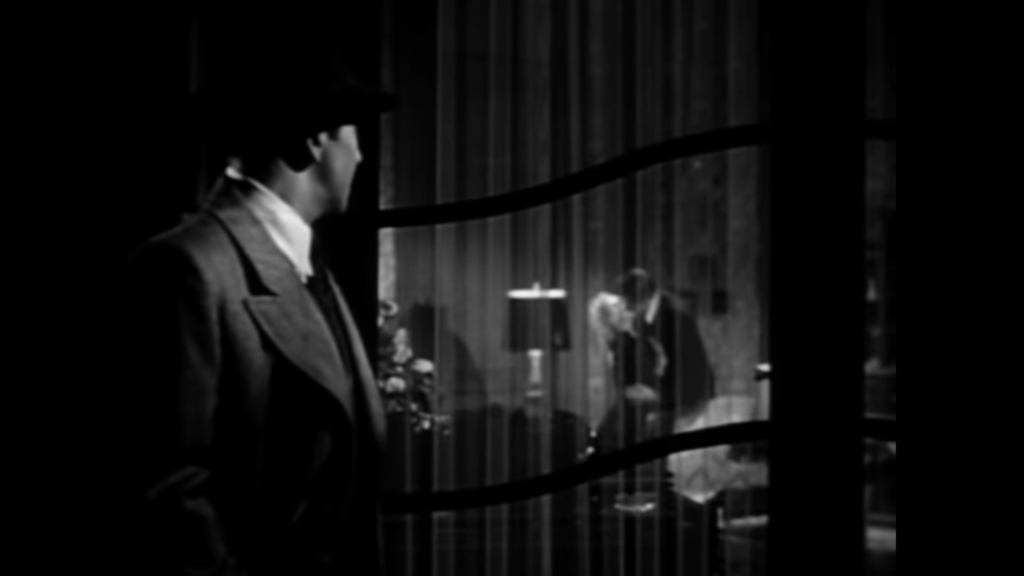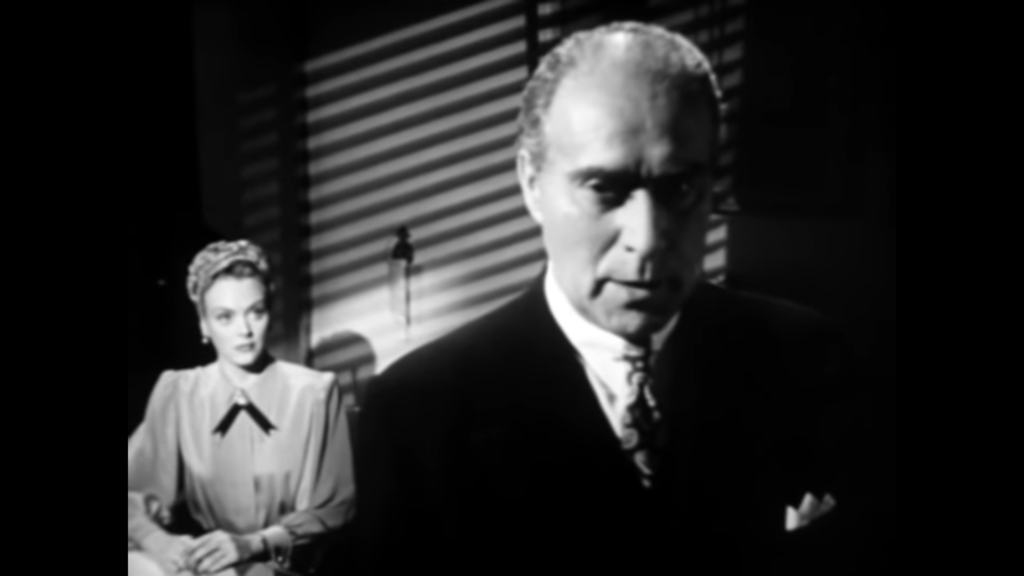
Today’s feature is 1948’s “Blonde Ice,” starring Leslie Brooks (Claire Cummings Hanneman), Robert Paige (Les Burns), Walter Sande (Hack Doyle), James Griffith (Al Herrick), Michael Whelan (Stanley Mason), Russ Vincent (Blackie Talon), John Holland (Carl Hanneman), Mildred Coles (June Taylor), Emory Parnell (Police Capt. Bill Murdock), and David Leonard (Dr. Geoffrey Kippinger). Directed by Jack Bernhard; cinematography by George Robinson. Produced by Martin Mooney for Martin Mooney Productions. Distributed by Film Classics. Screenplay by Kenneth Gamet, from the 1938 novel “Once Too Often,” by Whitman Chambers.
As you can glean from the information above, this is a very low-budget production, but the script is well-written, which saves the film. It was thought to be lost for decades, but found by private collectors and restored by VCI Entertainment. The copy I’ve provided here is ad-free and available to watch on YouTube:
But before I get into the film itself, let’s first discuss today’s woman of noir: the femme fatale or “deadly woman.” It’s an apt descriptor, because someone ends up dead–or at the very least completely ruined–because of her. The femme fatale is the direct descendant of Eve in the Garden of Eden, tempting Adam into a life of misery in their fall from grace, which she engineered. Or, at least, that’s how the man who wrote the book of Genesis portrayed her. (Sorry, couldn’t help myself.) But to put a point on this: the woman as seductress/enchantress/witch who destroys men is an archetype as old as storytelling itself; so it’s no wonder she became a stock character in film noir, which is all about people destroying and being destroyed. She fits right in with the criminals, sleazy detectives, and morally ambiguous “heroes” of the genre. She’s also the polar opposite of the female character we discussed last week, the “Woman in Distress.”
Claire Cummings Hanneman is a particularly brutal example of the femme fatale, which is the main reason I selected this film for our August programming. She’s one of a very small sorority (Hubby and I could only come up with one other, Helen Grayle/Velma Valento in the film “Murder, My Sweet”) who is not only the FF but the protagonist of the movie. And in Claire’s case, there’s absolutely nothing redeeming in her character–she’s grasping, scheming, a social climber, and willing to do whatever it takes to acquire wealth and power. And unlike most FF’s who sit back and simply manipulate men to do their dirty work for them, Claire is more than up to the task of ending any roadblock in her path. Moreover, she’s also capable of framing a man she claims to love, all to cover her evil deeds.
You really can’t get any colder than that. At one point, when Les Burns–the poor slob who’s in her thrall–realizes just how bad she is, he remarks, “I once said I couldn’t figure you out. I can now. You’re not a normal woman. You’re not warm; you’re cold, like ice. Yeah, like ice–blonde ice.”
To put it bluntly, Claire isn’t merely bad, she’s a psychopath, completely without feelings. At the end of the film she muses that she never loved any man; but for some reason she could never let go of Les, even though he could give her none of the things she craved. She then adds that that must be love, right?
Um, no, Claire. That’s obsession, with a bit of narcissism thrown in for good measure.
Claire’s fatal flaw is her carelessness. She’s also maybe not the brightest bulb in the chandelier; if she’d been a bit smarter, she might’ve gotten away with the first murder, but she wiped the prints off the gun and then tossed it on the floor. It’s hard to convince the cops a death is suicide when the victim’s prints aren’t on the gun and he has no gunpowder residue on his hands or clothes. So that’s not a flaw in the storytelling, but rather a glimpse into her failings. She might be a psychopath, but she’s going to fail in her attempts to get away with murders.
As for the film itself, it features a bunch of actors you’ve probably never heard of; most are adequate, but nothing memorable in the way of performance. There are some nice camera shots occasionally which are evocative of the noir style, like this one:

Or this one:

Because of the strong femme fatale lead, I give this film 3 unfiltered cigarette puffs out of 5. Bravo, Claire! You’re a dame we’re not likely to soon forget!
Next week we’ll be discussing the Girl Next Door archetype and the film “Money Madness.”
As always, this is an open thread, so feel free to discuss whatever you like in the comments below.
